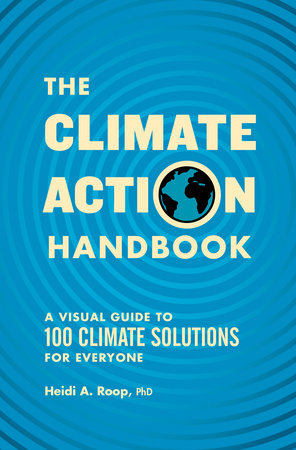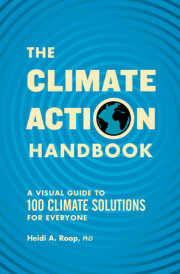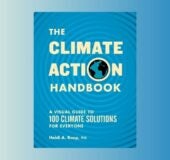PrefaceIn 2015, 196 countries endorsed the Paris Agreement, committing to the goal of limiting global temperature rise to “well below” 2°C (3.6°F) and “pursuing efforts to limit the temperature increase to 1.5°C” (2.7°F) above pre-industrial levels (the mid- to late-1800s is commonly used as a reference point for pre-industrial conditions and is a baseline against which current temperatures are compared). If the rate of current warming continues, global average warming is likely to reach the 1.5°C target between 2030 and 2052--within the lifetime of most people alive today. With every increment of additional warming, the costs and challenges of climate impacts increase. The next decade is pivotal for climate action and for global society. What we choose to do--or not do--over the next several years will shape our collective climate-changed future for generations.
Limiting warming to 1.5°C can be achieved only if action is taken to reduce global carbon dioxide emissions by around 45 percent from 2010 levels by 2030, and to net zero by 2050.
Net zero means that the amount of carbon dioxide (CO2) being produced is matched by the amount being removed, by activities that take it out of the atmosphere, like planting trees, and deploying technologies that remove CO2 from the atmosphere.
This all requires societal transformation and rapid implementation of ambitious greenhouse gas reduction measures. The Intergovernmental Panel on Climate Change (IPCC), the United Nations body for evaluating the science related to climate change, makes it clear that no single sector, action, or fuel type can provide the needed emission reductions to reach these targets. Limiting warming to 1.5°C will require largely phasing out coal use by midcentury, reducing CO2 emissions from industry by 75 to 90 percent by 2050 (relative to 2010), supplying most electricity from renewable energy sources like wind and solar, and significantly enhancing energy efficiency across all sectors, including in commercial buildings and homes.
Much of this work is underway, but reaching these goals means we must accelerate the pace and scale of our global climate work over the next 10 to 20 years. And while there is no question that this type of transformative change will require large-scale systemic changes, each and every one of us can show up in the conversations and actions needed to help meet these ambitious goals. Something you care about is at risk from climate change. We each need to learn about the local and global consequences of these changes and find ways, large and small, to engage in solutions.
This book is an attempt to outline just a few of the myriad ways that individuals from all walks of life and perspectives can better understand what climate change will mean for the things they care about, as well as to outline ways we can show up. This book represents a passion project meeting a practical need. I, too, wanted to know where there were opportunities for me to learn, engage, and act. I wanted to help to answer the question I hear daily: What can I do to help address climate change?
The climate actions presented here are an attempt to help paint a picture of the breadth, depth, and opportunity that abounds in the space of climate change solutions. Importantly, not all climate actions captured here are directly associated with emissions reductions; climate solutions aren’t only an emissions-related numbers game, and not all actions are easily quantifiable. This book intentionally doesn’t use a hierarchy or quantification of what actions are “best” or have the biggest ‘impact.” Other resources, like Project Drawdown, an award-winning climate nonprofit, paint a sophisticated, data-driven picture of climate solutions at scale. Some of those same solutions are here in this book, but so are actions like being a savvy consumer of climate information, becoming civically engaged, and participating in climate conversations. Some actions are costly; some are free. Some are time-intensive; some require a little forethought or reflection. All have value and represent some form of impact whether that is environmental, social or at the individual or collective scale.
Ultimately, the sections in this book are bite-size pieces to help us get our arms around a big, beautifully complex challenge. For each fact or statistic in this book, there were dozens more that weren’t able to fit. Each action or idea offers an entry point into a topic that might be of particular interest to you. Some might inspire you to think (and act!) in a different way. Others might just provide you with more knowledge around the impacts and consequences of climate change. There is a wealth of information available and numerous nuances for each topic. Each one could easily have become a book in its own right.
And this amount of information is growing every day as concern grows and solutions are developed or scaled. The data sources, in fact, seem infinite, and the calculus, facts, and figures are ever-evolving and changing. Even over the time it took to write this book, new research, poll results, and climate commitments were made. This will continue. I choose to see this as a sign that the climate change landscape is shifting and evolving to meet the challenge of the moment, with new interest and investments being made to work toward climate change. We are living through in a dynamic moment that will surely make it into history books.
Facts and figures don’t necessarily change hearts and minds, but people doing things
can. And many of the people I interact with, from all different walks of life, are seeking more information to inform their unique climate solutions journey. They are often looking for more information about specific actions to inform themselves, but also to share in conversations with their family members, friends, and coworkers, and in their communities.
Let’s be clear, climate change will bring environmental, social, and cultural change. Our past emissions of greenhouse gases have committed us to change, but we still get to choose how much change we experience, and what kind. Human-caused climate change is already causing people to experience loss of property, loss of culture and identity, and loss of livelihoods. But embedded within many climate solutions are opportunities--opportunities to create a healthier, brighter future. Climate actions can create near-instantaneous improvements in air quality and can offer ways to address societal inequities, green our communities, save money, build local economies and jobs, and help develop or deepen relationships.
My hope is that something in the pages that follow will empower you to evaluate, engage, and act. How we engage and what we do may change day-to-day, month to month, or year to year, but what matters is that we do act and that we build and maintain momentum. We can do that by each doing some of the work as individuals and work with others to advocate for the systems-based changes we know are needed to decarbonize the world and build climate-ready communities. Together, we can help shape and create the future we want through actions big and small. At the end of the day, every action really can matter. We just have to act.
Action 15: Fly Less, Fly Economy Commercial and freight aviation produces an estimated 2.5 percent of total global carbon dioxide emissions and 1.9 percent of total global greenhouse gas emissions. However, aviation’s impact on the warming of the planet is higher, at around 3.5 percent, due to a complex set of factors including the production of water vapor, soot and sulfate aerosols, and increased cloudiness that are created by the formation of contrails. While these numbers may seem small, between 2013 and 2018, aviation-based emissions increased by 32 percent, with an increase of around 5 percent in global aviation-based CO2 emissions each year between 2010 and 2020.Aviation emissions, including all of the greenhouse gases emitted by airplanes, have doubled since the mid-1980s.
Despite growing global demand for flying today, commercial aviation emissions are produced by a tiny fraction of the world’s population, with only 11 percent traveling by air in 2018 and just 1 percent responsible for 50 percent of the CO2 emissions from commercial aviation. In 2018, the United States had a reported 590 million domestic air passengers, and North America accounted for just over 25 percent of total global air transportation.
Even while there are new commitments from the aviation industry to expand the use of more sustainable fuels and create zero-emissions aircraft, those technologies are not yet proven at scale and are still a ways off. So, for those of us who fly, flying less is an important climate act. In fact, flying can represent a disproportionate part of an individual’s own carbon footprint, as mile for mile, flying is one of the most emissions-intensive activities many of us engage in. And flying in the front of the aircraft in premium classes results in an impact about three times worse--these seats are larger and mean fewer passengers who can share the total emissions produced during a given trip. If your work has traditionally required travel, an increasing number of options are available to limit it, such as virtual and hybrid meetings or conferences. For a more detailed look at the role of business and conference travel, check out Action 19.
How can you minimize your air travel, and will you choose to sit in coach?
Action 48: Keep Your Devices Longer and Dispose of Them Properly Open that junk drawer, closet, or favorite hiding spot for your old phones, tablets, and other electronic devices. Did you know that both the devices collecting dust
and the ones we are actively using come with a real climate impact? It isn’t just the devices themselves--every text, email, funny meme, or online purchase we make requires a server and data center, which are incredibly energy-intensive.
Smartphones have a surprising impact too. One study calculated the emissions from smartphone manufacturing and use at 125 megatons CO2e, with around 85-95 percent of these emissions produced during manufacturing. When we look at the full life cycle of a smartphone--from mining and manufacturing the 60 different elements in the phone to how it is disposed of at the end of its life--it adds up. In fact, the amount of waste produced in the European Union from manufacturing new electronics was five times greater than the amount of e-waste created by EU consumers disposing of their old electronics.
All of this waste is problematic, whether in the manufacturing or end-of-life stage. For example, electronic waste, a.k.a. e-waste--which refers to products at the end of their “useful life--is a growing problem. It has been called a national security risk, is bad for our health, has real financial costs, is rarely properly recycled (leading to the loss of critical resources), and can be a real environmental justice issue. Globally, 53.6 million metric tons of e-waste was created in 2019, with an estimated $57 billion of reusable, high-value materials like gold, copper, and platinum being tossed or burned as a result of poor practices by consumers and corporations.
What can we do? Keep your electronic devices as long as possible, and avoid the urge to upgrade your phone every time a new version is available. Rather than replacing our phones every two years, keeping these devices (that require phenomenal resources to create) will help limit our impact. And when you need to get a new phone, tablet, computer, or monitor, please properly recycle your old devices. Today, 99 percent of smartphones are not recycled. On a bigger scale, we also need to encourage policies and companies to get our data centers running on renewable energy.
Will you commit to keeping your devices as long as possible and creating less e-waste?
Copyright © 2023 by Heidi Roop. All rights reserved. No part of this excerpt may be reproduced or reprinted without permission in writing from the publisher.
















